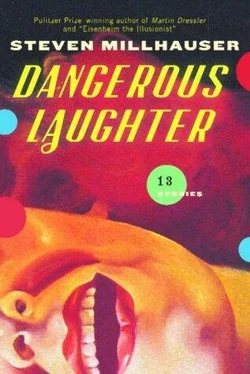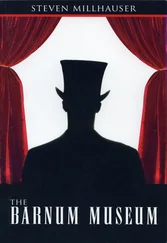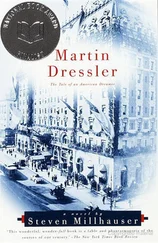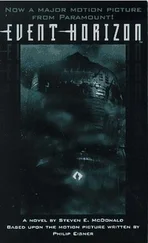The Phantoptic Theater opened on October 4, 1883. People purchased tickets at the door, passed through a foyer illuminated by brass gas lamps on the walls, and made their way toward an arched opening half concealed by a thick crimson curtain hung on gold rings. The curtain, the arch, and the rings turned out to be images painted on the wall; the actual entrance was through a second, less convincing curtain that opened into a small theater with a high ceiling, worn red-plush seats for some three hundred people, a cut-glass chandelier, and a raised stage with a black velvet curtain. Between the audience and the stage stood a piano. Newspaper reports differ in certain details, but the performance appears to have begun by the emergence from a side door of a man in evening dress and gleaming black shoes who strode to the piano bench, flung out his tails, sat grandly down, threw back his head, and began to play a waltz described variously as “lively” and “melancholy.” The hissing gas jets in the chandelier grew quiet and faint as the footlights were turned up. Slowly the black curtain rose. It revealed an immense oil painting that took up the entire rear wall of the stage and was framed on three sides by a polished dark wood carved with vine leaves and bunches of grapes.
The painting showed a ballroom filled with dancers: women with roses and ropes of pearls in their high-piled hair, heavily flounced ball gowns that swept along the floor, and tight-corseted bosoms pressing against low-cut necklines trimmed with lace; men with beards and monocles, tight-waisted tailcoats, and very straight backs. A hearth with a fire was visible in one wall, high windows hung with dark blue velvet curtains in another. As the audience watched and the pianist played his lively, melancholy waltz, the figures in the painting began to dance. Here the newspaper accounts differ. Some say the figures began to waltz suddenly; others report that first one pair of dancers began to move and then another — but it is clear that the figures were moving in a lifelike manner, made all the more convincing by the waltz music welling up from the piano. Other movements are also mentioned: the flames in the fireplace leaped and fell, a man leaning his elbow on the mantelpiece removed his monocle and replaced it in his eye, and a woman with yellow and pink roses in her hair fanned herself with a black silk fan.
The audience, exhilarated by the spectacle of the waltzing figures, soon began to notice a second phenomenon. Some of the dancers appeared to emerge from the ballroom onto the stage, where they continued waltzing. The stage, separated from the first row of seats by the piano and a narrow passageway, gradually seemed to become an extension of the ballroom. But the optical effect was unsettling because the dancers on the stage were seen against a ballroom that was itself perceived as a flat perspective painting — a painted surface with laws of its own. After no more than a minute or two the dancers returned to the painting, where for several minutes they continued to turn in the picture until the last notes of the waltz died away. Gradually — or suddenly, according to one journalist — the figures became immobile. In the auditorium, the gaslights in the chandelier were turned up.
From a door at stage left emerged Harlan Crane, dressed in black evening clothes and a silk top hat that glistened as if wet in the glare of the gas jets. He stepped to the front of the stage and bowed once to enthusiastic applause, sweeping his hat across his body. He rose to wait out the shouts and cheers. Holding up a hand, he invited the audience onto the stage to examine his painting, asking only that they refrain from touching it. He then turned on his heel and strode out of sight.
An assistant came onto the stage, carrying a long red-velvet rope. He suspended the rope between two wooden posts at both ends of the painting, some three feet from its surface.
Members of the audience climbed both sets of side steps onto the stage, where they gathered behind the velvet rope and examined the vast canvas. Sometimes they bent forward over the rope to study the painting more closely through a lorgnette or monocle. In this second phase of the show, the theater may be said to have withdrawn certain of its features and transformed itself into an art museum — one that contained a single painting. The evidence we have suggests that it was in fact an oil painting, with visible brushstrokes, rather than a screen or other surface onto which an image had been cast.
There were three showings daily: at two o’clock, four o’clock, and eight o’clock. Crane, who was present at every performance, never varied his routine, so that one wit said it wasn’t Harlan Crane at all, but a mechanical figure, like Kempelen’s Chess Player, fitted out with one of Edison’s talking machines.
Contemporary accounts speculate lavishly about the secret of the motions, some seeing the Phantoptic Theater as a development of the old Diorama, others arguing that it was done with a specially adapted magic lantern that projected serial images of dancers onto a motionless background. But the motions of the Diorama were nothing like those of the Phantoptic Theater, for Daguerre’s effects, produced by artful manipulation of light, were limited to extremely simple illusions, such as lava or masses of snow rushing down the side of a mountain; and the theory of serial projection, while anticipating later advances in the development of the cinema, cannot explain the emergence of the dancers onto the stage. For their part, the dancers onstage are variously explained as real actors appearing from behind a curtain, as images projected onto “invisible” screens, and as optical illusions produced by “hidden lenses” that the writer does not bother to describe. In truth, the riddle of Crane’s Ballroom illusions has never been solved. What strikes the student of cinema is the peculiar position assumed by Crane and his theater with respect to the history of the illusion of motion. For if in one respect the Phantoptic Theater shares the late-nineteenth-century fascination with the science of moving images, in another it looks back, far back, to a dim, primitive world in which painted images are magical visions infused with the breath of life. Crane’s refusal to abandon painting and embrace the new technology of serial photographs, his insistence on creating illusions of motion that cannot be accounted for in the new way, make him a minor, quirky, exasperating, and finally puzzling figure in the prehistory of the cinema, who seizes our attention precisely because he created a riddling world of motion entirely his own.
For a while the daily shows of the Phantoptic Theater continued to draw enthusiastic audiences, even as the press turned its gaze in other directions. By the end of the year, attendance had begun to decline; and by the middle of January the theater rarely held more than a few dozen people, crowded expectantly into the front rows.
We have several glimpses of Crane during this period. In the diary of W. C. Curtis we hear that Crane is hard at work on a new painting for his theater, though he refuses to reveal anything about it; sometimes he complains of “difficulties.” One evening in December, Curtis notes with surprise the presence of a youngish woman at the studio, with auburn hair and a “plain, intelligent” face, whom he recognizes as the woman in the chemise. Crane introduced her first as Annie, then as Miss Merrow; she lowered her eyes and quickly disappeared behind a folding screen that stood in one corner of the studio. After this, Curtis saw her now and then on evening visits, when she invariably retreated behind the screen. Crane never spoke of her. Curtis remarks on his friend’s “secretive” nature, speculates that she is his mistress, and drops the subject.
Читать дальше












